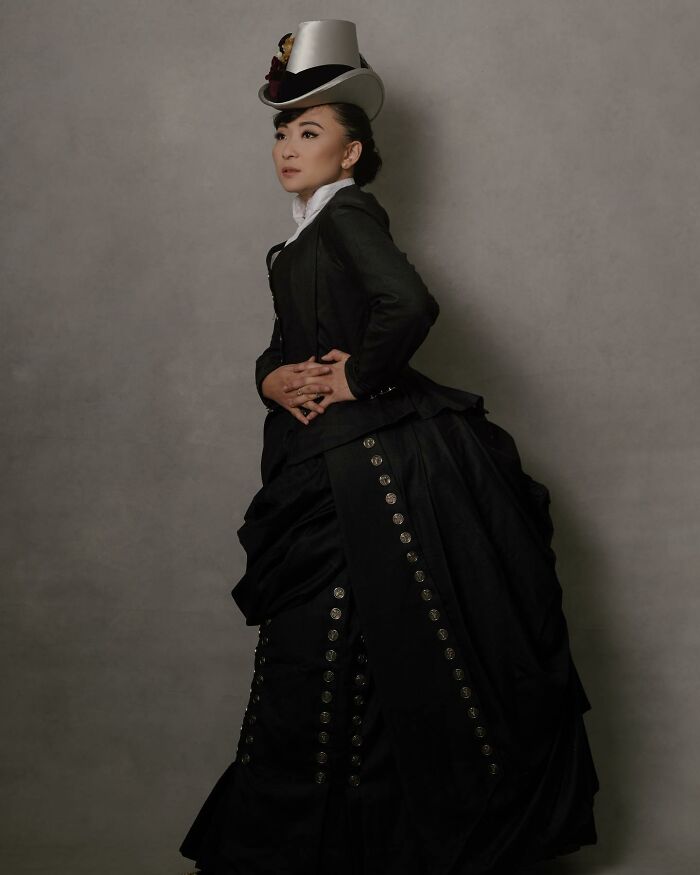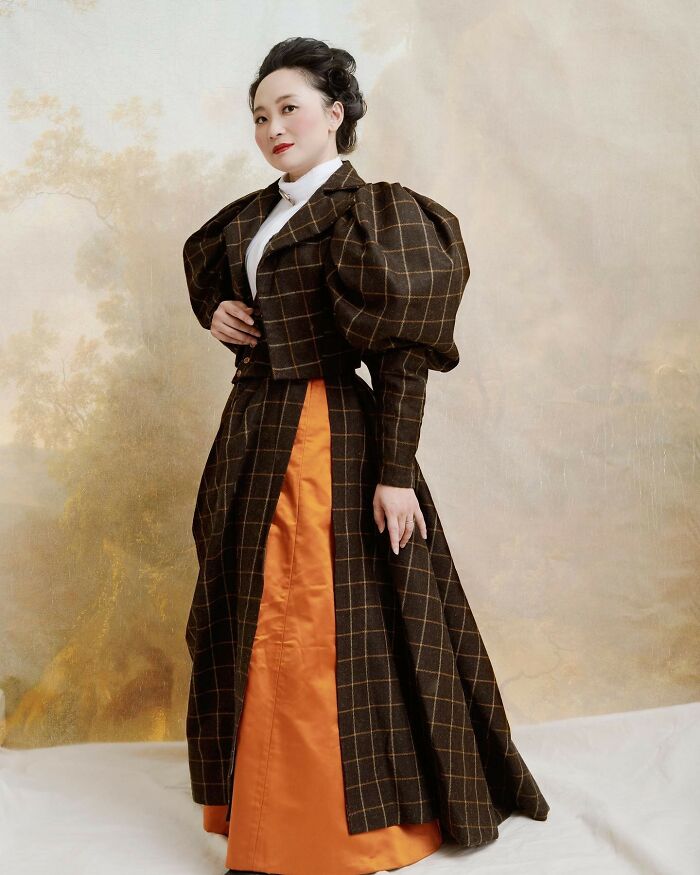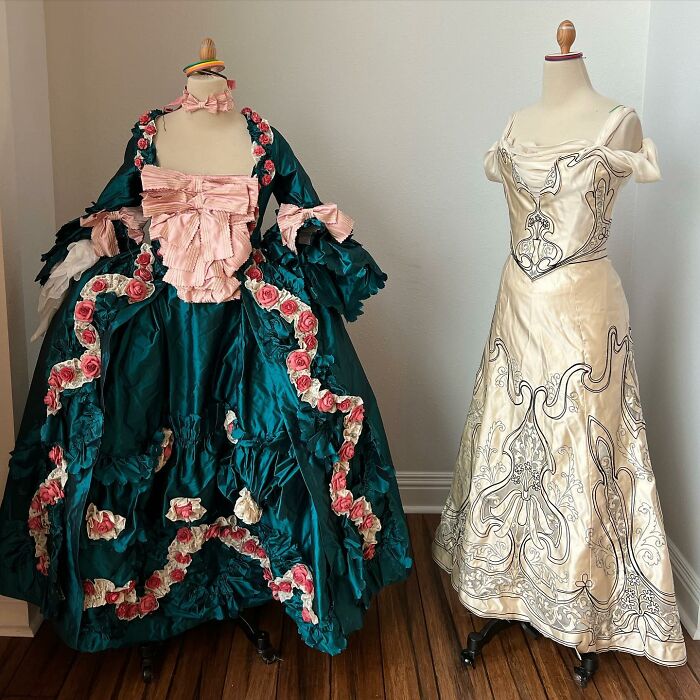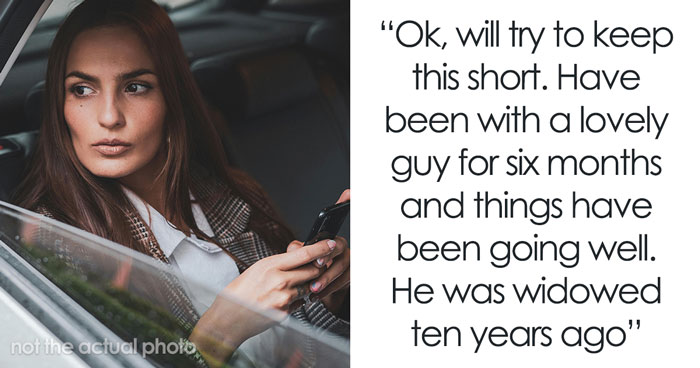
7Kviews
This Anesthesiologist Finds Relaxation In Recreating Historical Clothes (21 New Pics)
Christine Millar is a doctor with an interesting and unusual hobby. She recreates historical clothes, which serves as an outlet to relax and release her inner artist. She mainly looks at inspiration from the 1700s and creates her unique looks.
"My favorite images growing up were historical gowns, princess gowns, and just overall pretty dresses. So I started to try to recreate them. I love taking a museum piece, like the green redingote from the Rijks Museum, and trying to figure out in my head how they sewed it together and how the original artist embroidered it," the artist has shared how her fascination with historical costumes began.
Continue scrolling to go back in time! Don't forget to upvote your favorite pieces and share your thoughts in the comments! For more beautiful costumes, check out our previous article here.
More info: Instagram | sewstine.com | Etsy | youtube.com
This post may include affiliate links.
This entire outfit is absolutely stunning. I love the skirt and top hat.
Christine's journey into historical clothing was inspired by her involvement in the cosplay scene. She would create cosplays for various events like Comic-Con in NYC. However, she noticed that her true passion lied in historical movies, particularly costumes from movies like "Sleepy Hollow". After attempting to make the black and white dress from "Sleepy Hollow" she found herself captivated by the process. From that moment on, she became hooked on crafting historical gowns, and her fascination only grew stronger with each creation.
For Christine, sewing is a real joy, but when it comes to hand embroidery, it's not her favorite. Instead, she found a solution by using a machine for embroidery. "I draw out, or 'digitize' the embroidery on a computer, designating exactly where I want each stitch to be, and in what order. After that, I send it to my embroidery machine and have it stitched out. It's a lot of fun to see something you've made on a computer stitched out in silk."
I love this. It's not as intricate as the others, but that's what I like about it.
When it comes to choosing which gown to create, Christine follows her instincts and feelings. "I always have a list of about 50 gowns in my head that I want to make. At some point, a whim or a thought comes to me that it's time to make that dress."
I actually really love Regency wear. Despite the incredibly high waist I do think it looks flattering on different body types.
This dress looks like it is a historically accurate version of the American Girl doll Felicity's holiday dress Felicity-6...e5cf23.jpg 
This might be my favorite. As soon as I saw it I gasped. It is so gorgeous and vibrant and you look absolutely stunning 💗
I am so jealous of the time she has to sew! To put it in perspective. The 1700s corset has minimally 6-8 hours of sewing. Not counting selecting fabric, preparing the boning, fitting the pattern, cutting the fabric and hand finishing. Next if skipping all other period underwear you still need the panier 'hoop skirt', and petty coat. New pattern, new materials. Another day 8-12 hour of stitching. The dress itself depending on embellishments can take 18 -24 hours for bacic construction just the stitching time. Embellishments, rosettes, beadwork and other trim can take 100s of hours if it is extensive and hand stitched. Her most complicated dress would have taken months to complete at a few hours our a day.
The one advantage in most of these is that she's making them to fit herself and she probably has a model to do a lot of that work on. I've also found that people that do it semi full-time or a lot of their time have shortcuts that really work not ones that are necessarily. But that you won't be able to tell the difference. I've not done Regency costuming but I've done medieval and Renaissance think SCA not fare so some type of authenticity and I knew people who could fit about anybody and it didn't take nearly as long as what you say up there
Load More Replies...I am so jealous of the time she has to sew! To put it in perspective. The 1700s corset has minimally 6-8 hours of sewing. Not counting selecting fabric, preparing the boning, fitting the pattern, cutting the fabric and hand finishing. Next if skipping all other period underwear you still need the panier 'hoop skirt', and petty coat. New pattern, new materials. Another day 8-12 hour of stitching. The dress itself depending on embellishments can take 18 -24 hours for bacic construction just the stitching time. Embellishments, rosettes, beadwork and other trim can take 100s of hours if it is extensive and hand stitched. Her most complicated dress would have taken months to complete at a few hours our a day.
The one advantage in most of these is that she's making them to fit herself and she probably has a model to do a lot of that work on. I've also found that people that do it semi full-time or a lot of their time have shortcuts that really work not ones that are necessarily. But that you won't be able to tell the difference. I've not done Regency costuming but I've done medieval and Renaissance think SCA not fare so some type of authenticity and I knew people who could fit about anybody and it didn't take nearly as long as what you say up there
Load More Replies...
 Dark Mode
Dark Mode 

 No fees, cancel anytime
No fees, cancel anytime 

























































